Hey Hilda fans! Ever wanted to peek into the mind of Luke Pearson? We asked Luke to tell us the story of Hilda: the origins of the series, how it has evolved over the years, how he feels about his older work, and why his latest title, Hilda and Twig, was created. Luke, take it away…
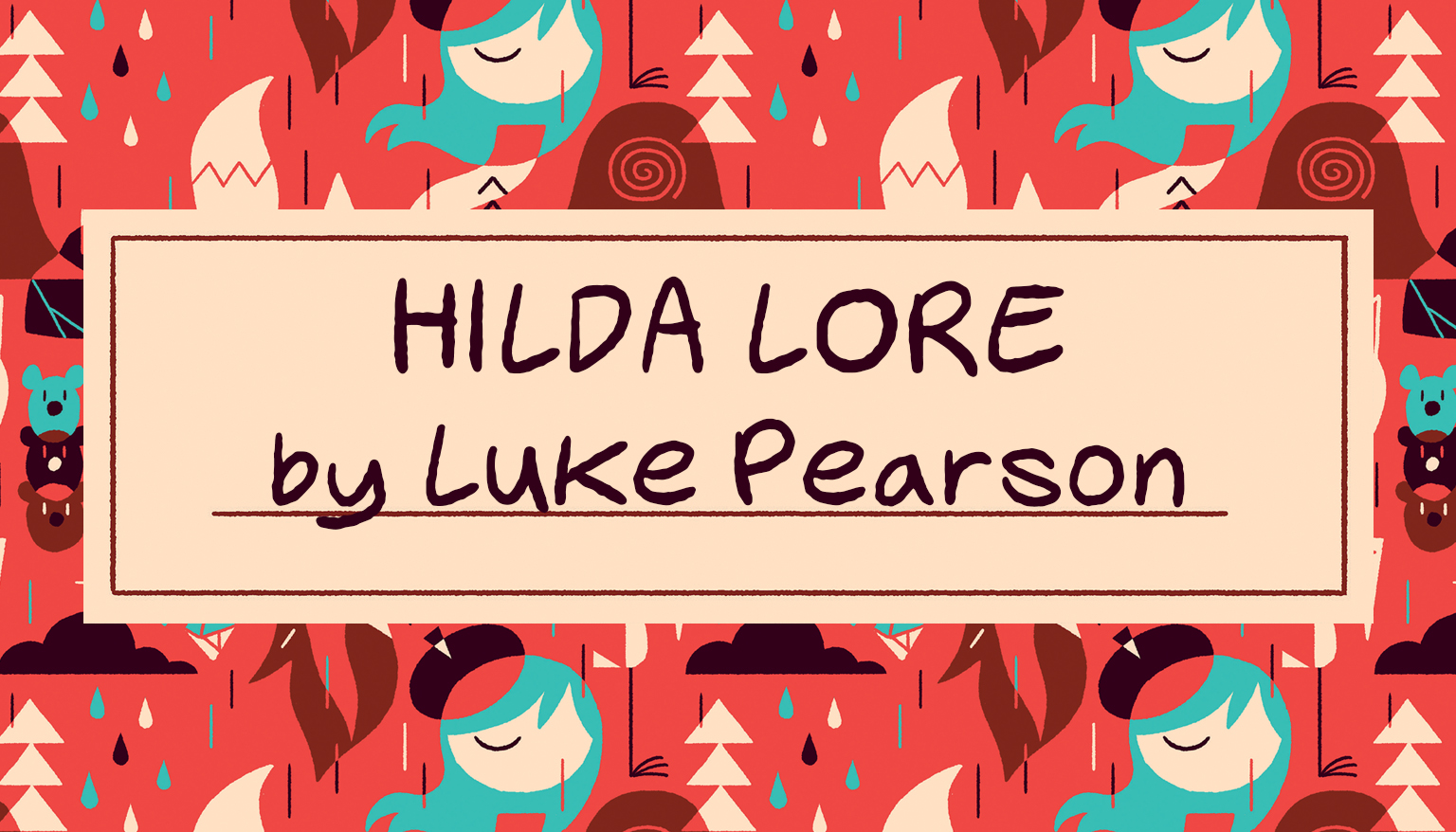
Hildafolk (later re-named Hilda and the Troll) was a short book by necessity. I was given 24 pages and I had the relatively modest goal of telling a simple story and capturing a particular feeling I had at the back of my mind. As the series continued and the scope of the world grew, so did the page counts, and so did the number of panels I attempted to cram onto said pages. With the animated series, the scope grew even further and with the input of other writers, the population of Trolberg vastly increased.
Until this point, the trajectory of Hilda’s world has been one of continuous growth, but the conclusion of the TV show posed a minor dilemma. I would like, at some point, to continue to let this world grow and look to Hilda’s future. But making a sequel to the existing comics which would feel like a continuation of the animated series, but without many of the major elements (David and Frida as we know them, Alfur etc.), feels like a tricky thing to navigate. Not impossible, but something I’d like to mull over further.
This is one reason that for my new book, Hilda and Twig Hide from the Rain, I’ve decided to look to the past. But it’s not the only one.
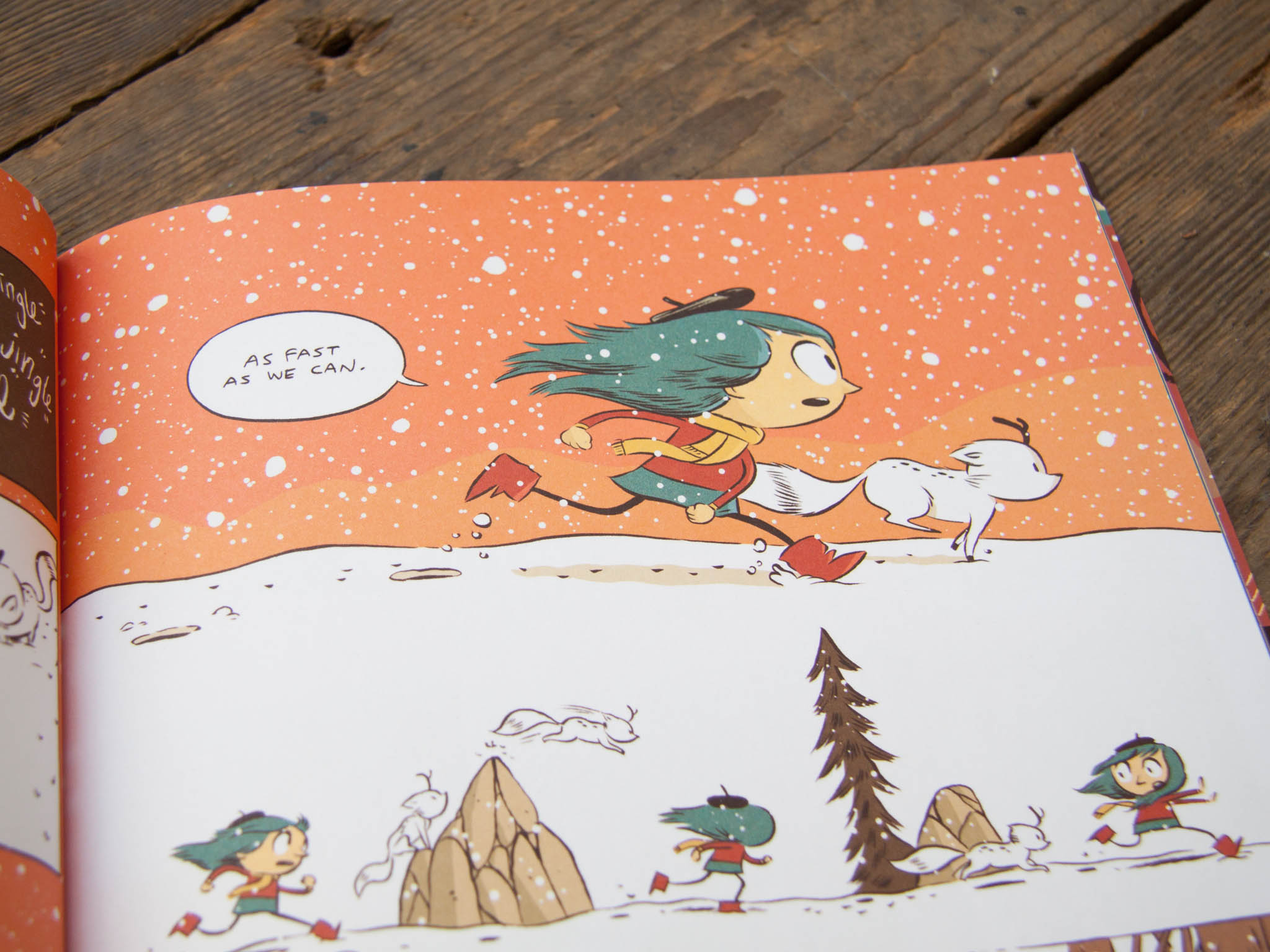
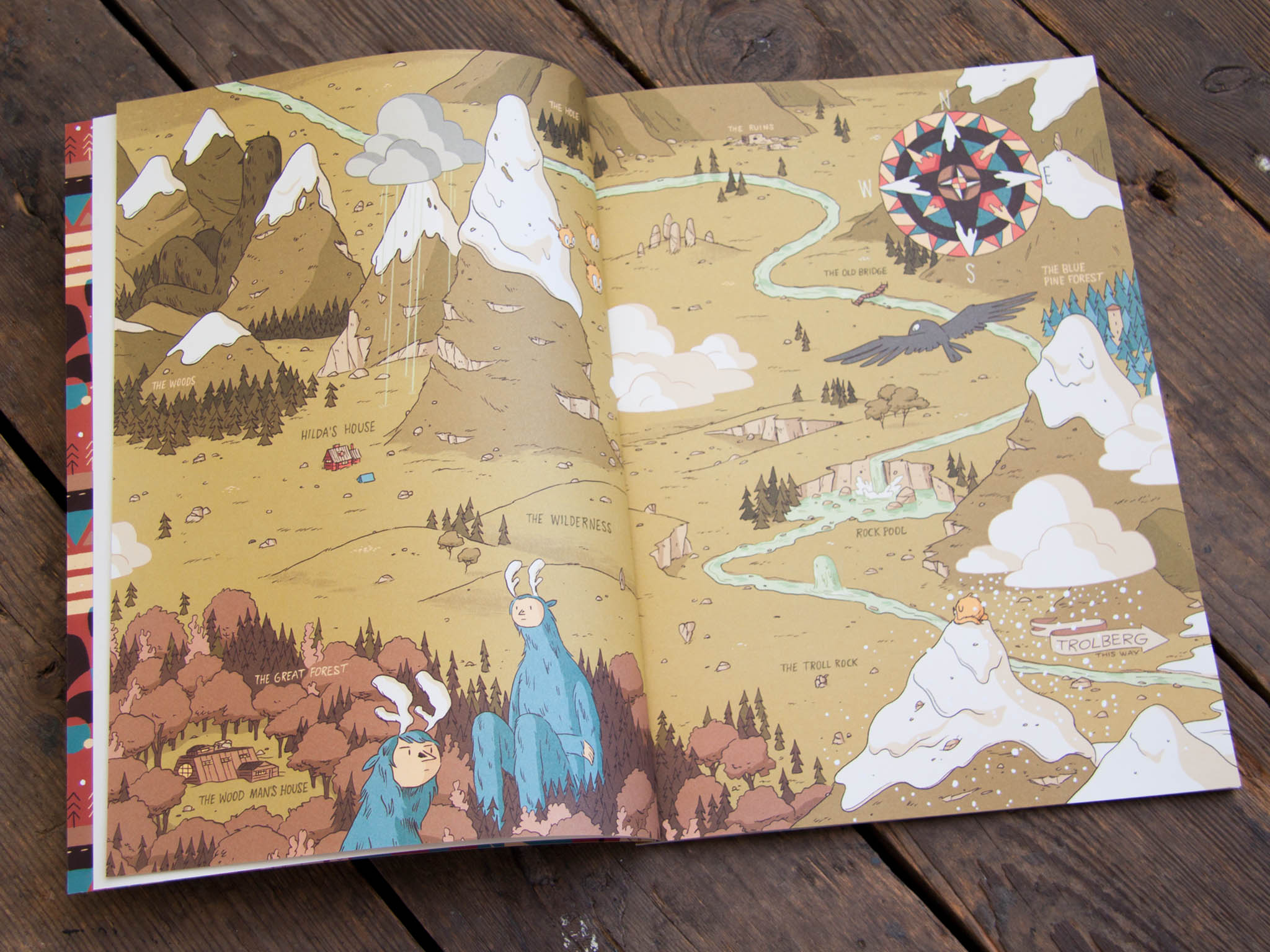
While making the animated series, I became a dad. Three times, in fact. And as a result, I’ve had the pleasure of reading my children’s comics to actual children. My oldest daughter was interested enough, but the contrast with our usual bedtime reading was immediately evident. Each page seemed to take an eternity to get through when subject to the attention span of a young child. There was a lot of finger pointing, attempting to guide her through what suddenly felt like an ungodly maze of panels which all felt a lot wordier than I remembered writing them. After a few years of reading picture books nightly, I’d started to value economy of words, finding that an optimal reading experience correlated strongly with a steady rhythm of satisfying page turns.
Obviously the Hilda comics had never really been intended to be read like this. And although anecdotally I know that parents have enjoyed reading the stories with their kids, I found myself wishing I had something that would work better as a bedtime story you could get through comfortably in one go. So, for this new book, I made a point to keep the number of panels per page low and to keep the dialogue relatively concise. I started to think about how the words would sound when read out loud, and I tried to prioritise interesting page turns and reveals as the story progresses.
Some might point out that the aforementioned Hilda and the Troll more or less fits the criteria of this “new” approach I’ve decided to take. It’s a very simple story, with very easy to follow panels and it’s also considerably shorter than the book I’ve just finished. But I always look back at that book with my nose scrunched and my eyes narrowed. I can only see the work of a much younger artist, who didn’t entirely know what he was doing and whose art was only just on the right side of competently publishable.
But I also see what I still consider the definitive representation of Hilda’s world. Hilda and Twig off on their own. The red cabin. The wilderness. Rocks and flowers. I moved on very quickly from this location, feeling its limitations and wanting to stretch out into what a more urban and relatable location could offer. But over the years, when I’ve drawn in people’s books, this is the Hilda I always draw. The one that says bye to her Mum and runs out of the cabin, with Twig, to see what the day brings. It’s never been lost on me that while it’s the version of Hilda that most quickly comes to mind (even in terms of the TV show, every episode of which opens with the image of that doomed little red house) there are relatively few pages dedicated to it. And as time has gone by I’ve occasionally found myself wishing I hadn’t made Jorgen put his foot down so soon.
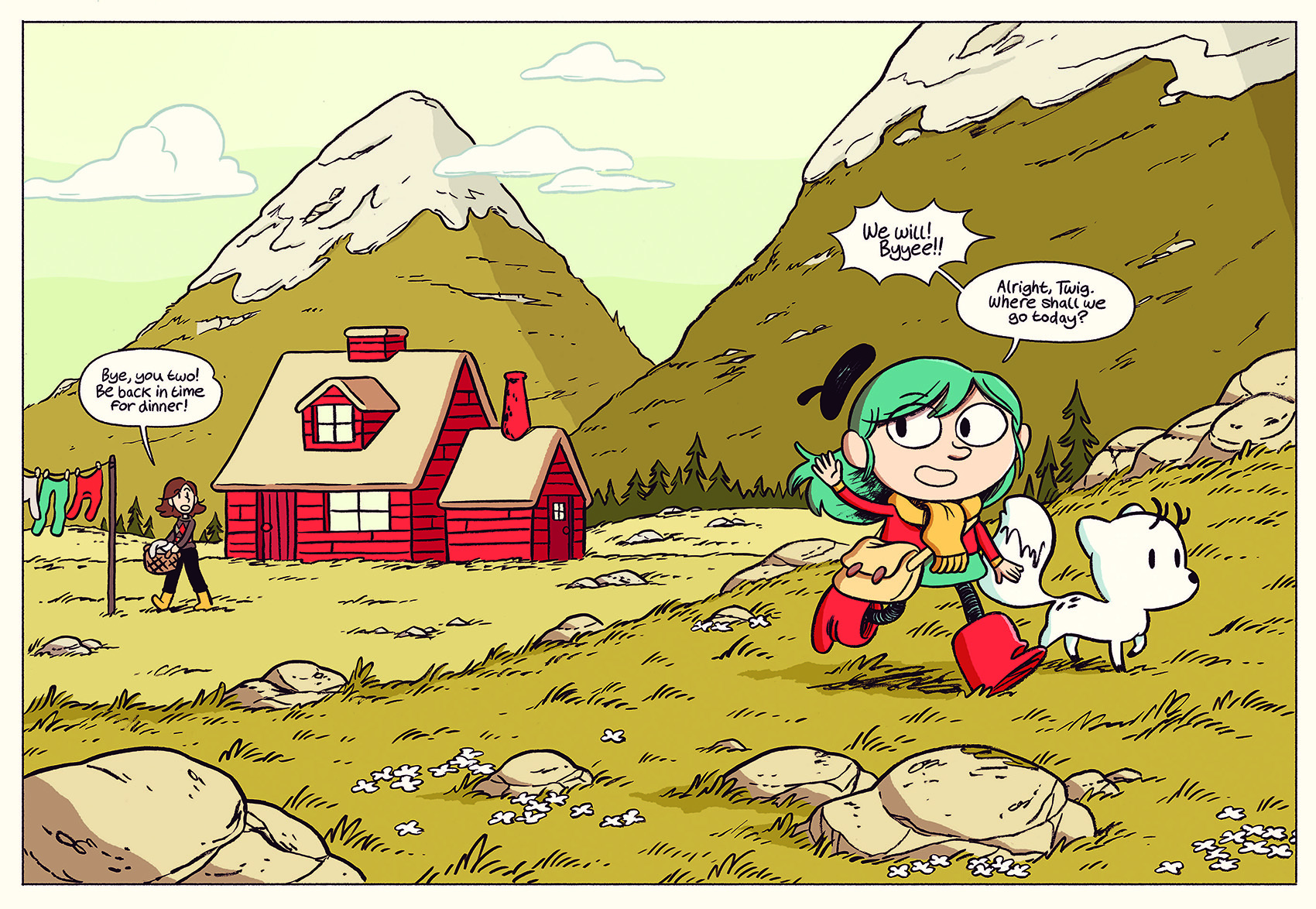
So this was an opportunity to go back there. To poke around at that original feeling I wanted to capture and have a go at depicting that world in a way that’s hopefully more pleasing to my eye, as a slightly more competent artist.
Finally, there is Twig. He’s always been a favourite among readers, and he’s probably the second most represented character on the page. In some ways he’s the series’ mascot, but regretfully he’s often been little more than that. As the comics went on, he would often follow Hilda or Johanna around and I would forget to give him things to do. This was even more evident when writing scripts for the animated series, when it felt like the question “wait, what’s Twig doing while all this is happening?” would often be asked a little too late. This was the impetus behind the episode The Deerfox, in which an increasingly overlooked Twig reconsiders his place in Hilda’s life. In the same way that it became harder to keep Twig active in a world where Hilda regularly goes to school and has human companions, it made sense that the character himself would be feeling the strain of this, in-universe.
With this in mind, I was excited to have the chance to make Twig a more fully rounded character. The question was how to do that, with a character that basically follows Hilda around and doesn’t talk. In the final flashback scene of The Deerfox, Johanna tasks the young Twig with looking after Hilda. A job that I like to believe he would take quite seriously. And so, as Hilda rambles off on her adventures, Twig would be there, keeping an eye on her. And that’s kind of the dynamic I wanted to explore. What if Twig isn’t following the young Hilda, but leading her?
And in regard to the talking thing; Well, what if he could talk? Not talk to Hilda of course, but talk to himself? What if we could see his thoughts? Find out what he really thinks about these scrapes and escapades he finds himself in? Could that be interesting? Or fun? Well, you’ll have to read the book to find out.
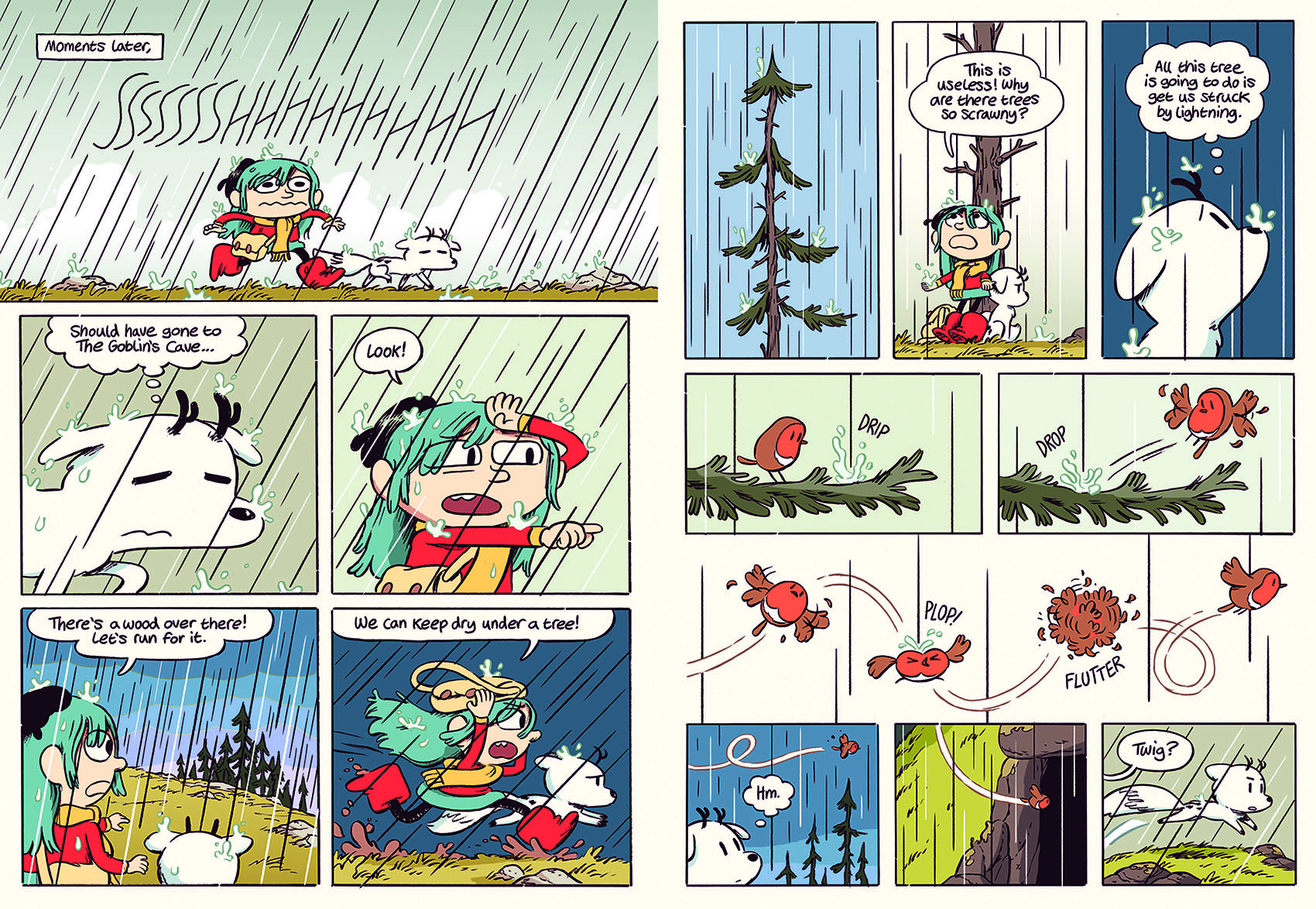
Hilda and Twig: Hide from the Rain
by Luke Pearson
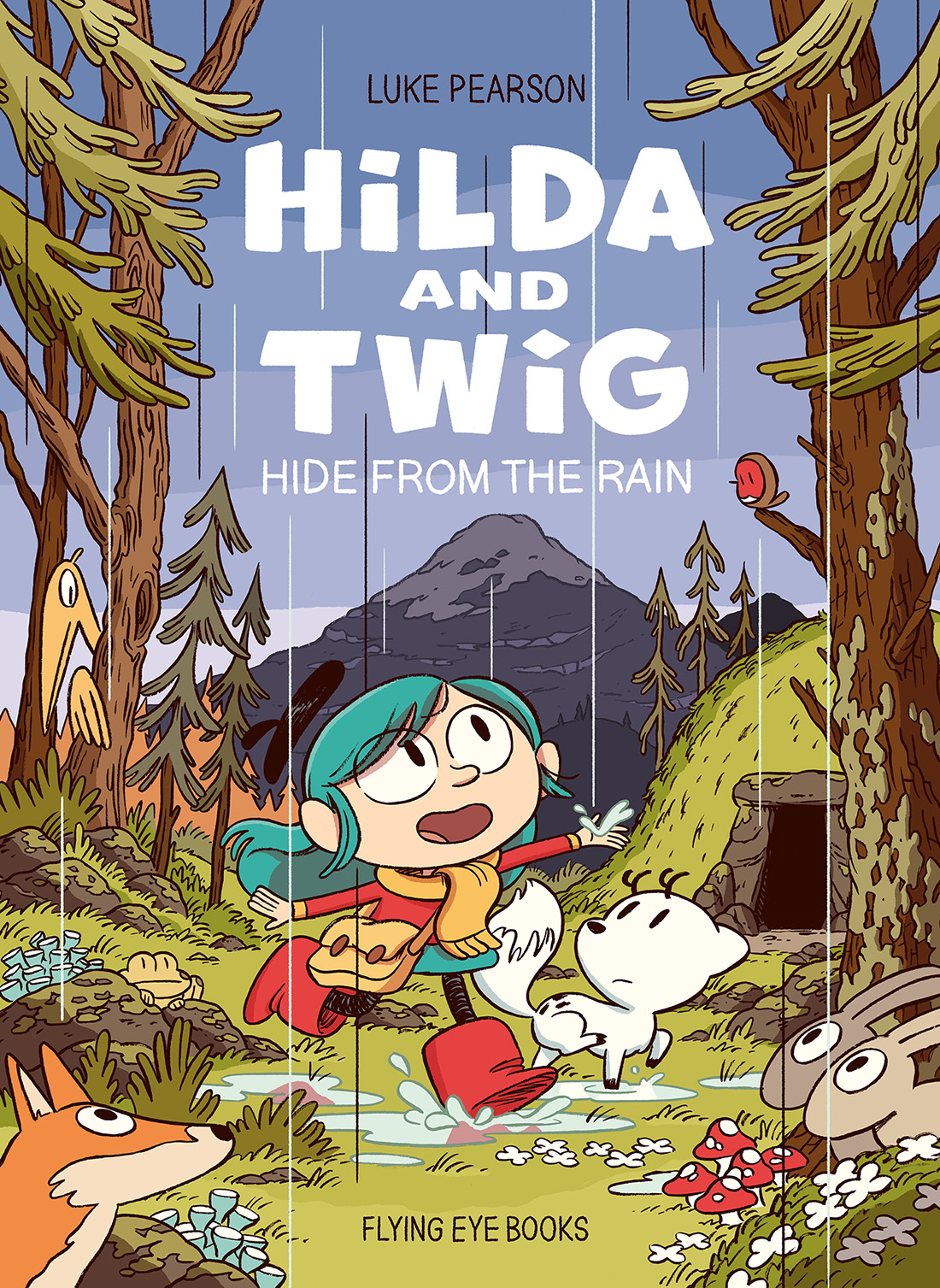
Hilda and Twig would never let a bit of rain get in the way of an adventure, but it’s different when your forest exploration is interrupted by a BIG storm.
Sheltering in a mysterious mound in the earth, Twig quickly realises that trouble is afoot, and that his best blue-haired friend is in danger. Unfortunately, he’s never really thought of himself as the brave one, but it looks like he’s going to have to step up and save Hilda from a whole load of big, scaly trouble! Dive into this magical comic as we follow our lovable pair on a soggy adventure.